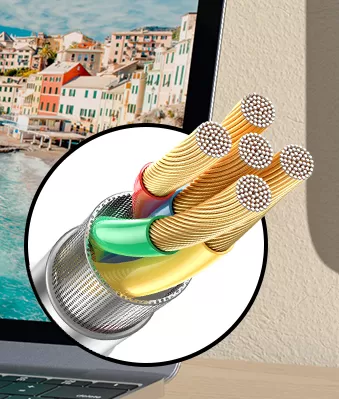Understanding the Pros, Cons, and Safety Implications
1. Pure Copper (100% Copper)
Best for: High-end power strips, heavy-duty devices.
Advantages
- Highest conductivity (≥98%) for minimal energy loss.
- Heat-resistant, durable, and corrosion-resistant.
- Safe for long-term use with 2000W+ devices.
Disadvantages
Higher cost than alternatives.
2. Aluminum
Best for: Low-cost, temporary-use power strips.
Advantages
Lightweight and affordable.
Disadvantages:
- Low conductivity (~60% of copper), causing energy waste and overheating.
- Prone to oxidation and fire risks over time.
3. Copper-Clad Aluminum (CCA)
Best for: Mid-range products balancing cost and performance.
Advantages:
Cheaper than pure copper, better conductivity than pure aluminum.
Disadvantages:
- Copper layer wears off over time, reducing safety.
- Not suitable for high-power devices.
4. Tinned Copper
Best for: Humid environments or industrial applications.
Advantages:
- Tin coating prevents oxidation and corrosion.
- Retains 95%+ conductivity of pure copper.
Disadvantages:
Slightly higher cost than pure copper.
